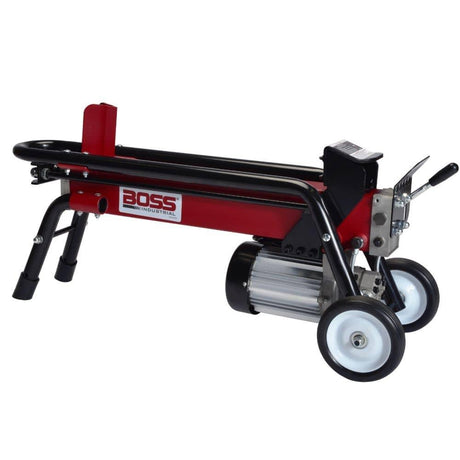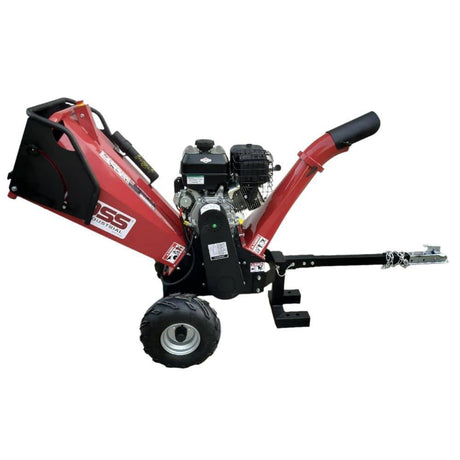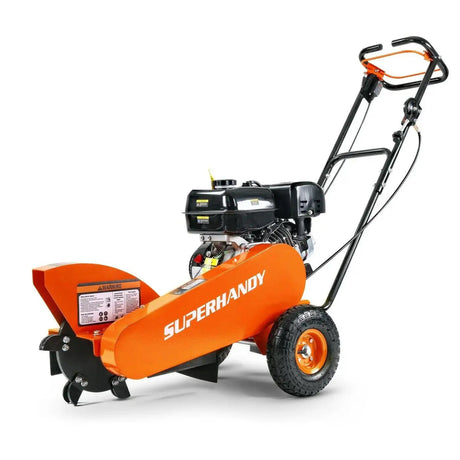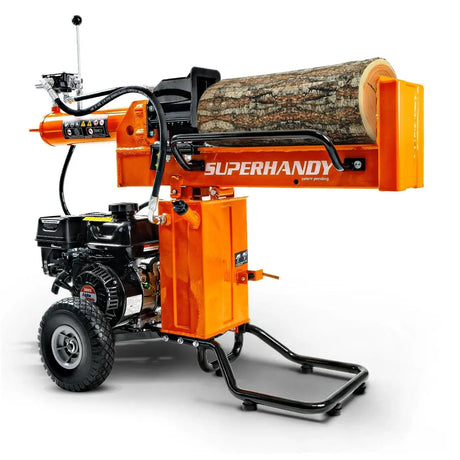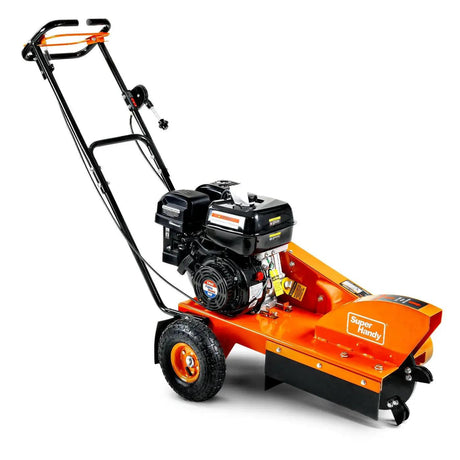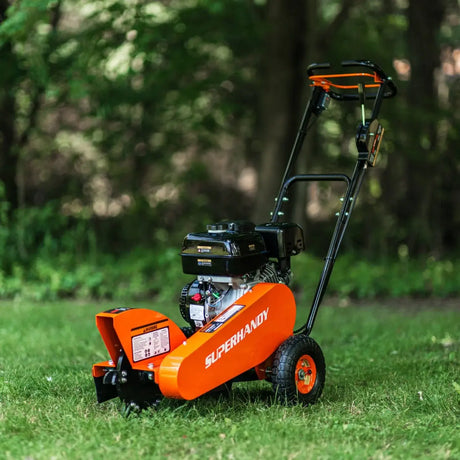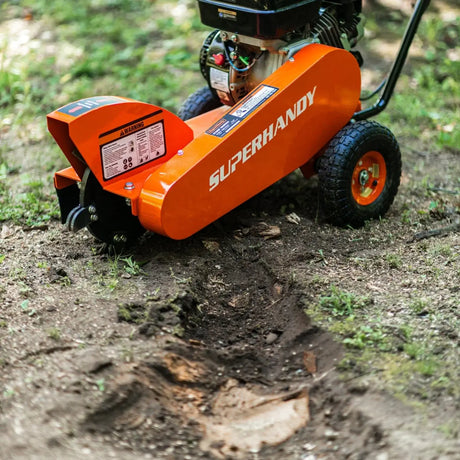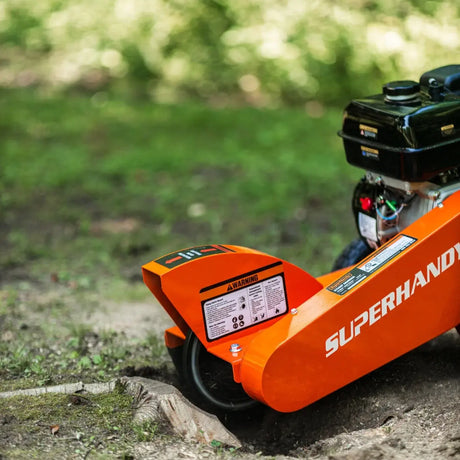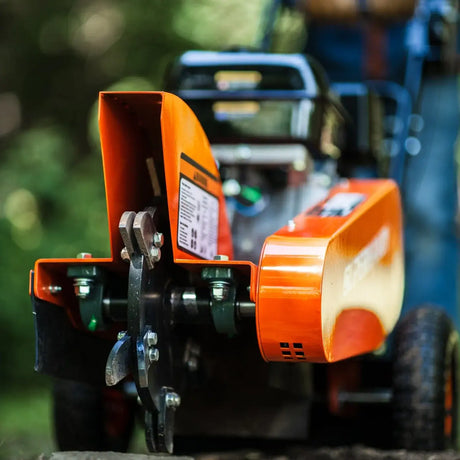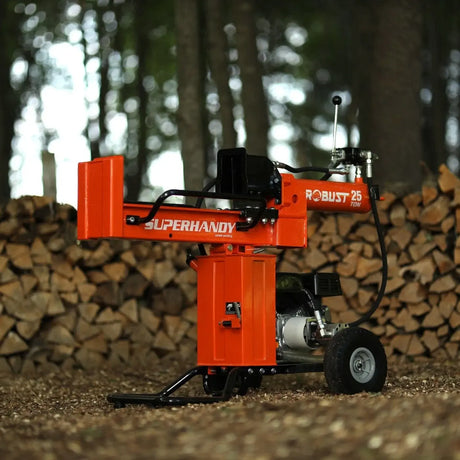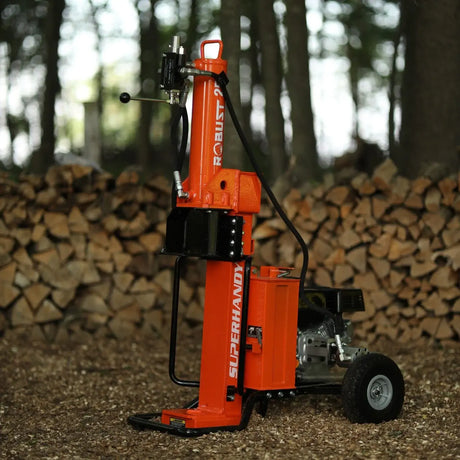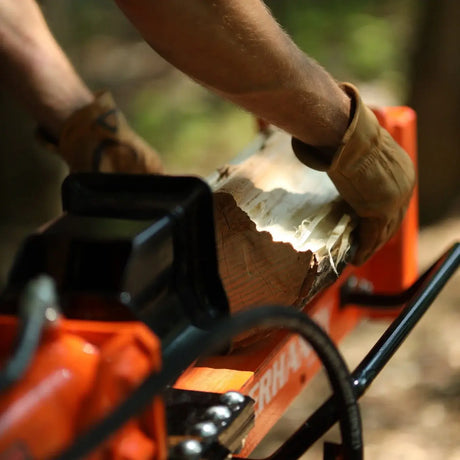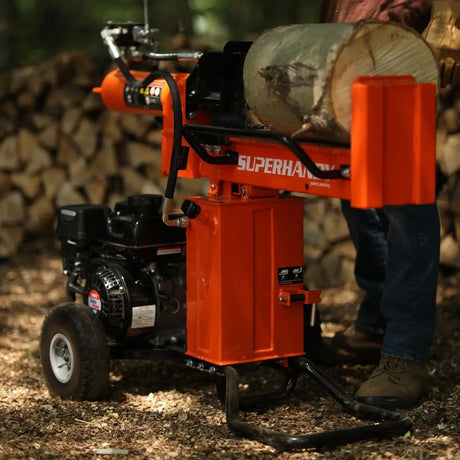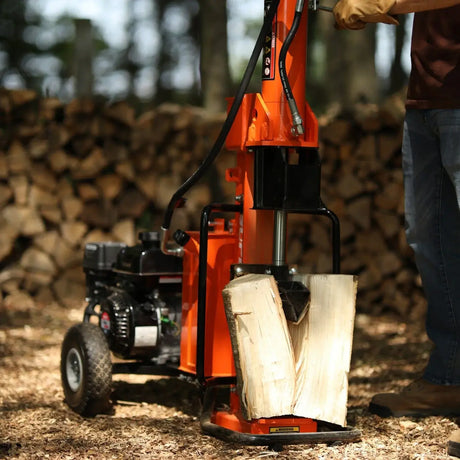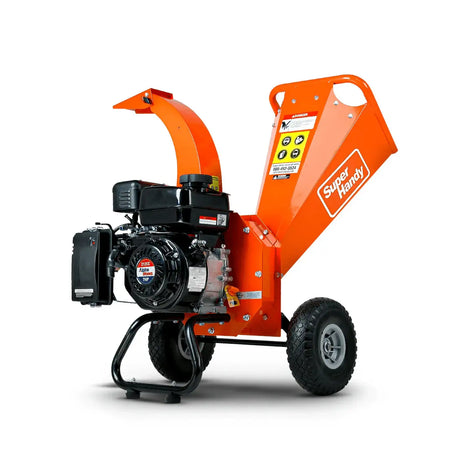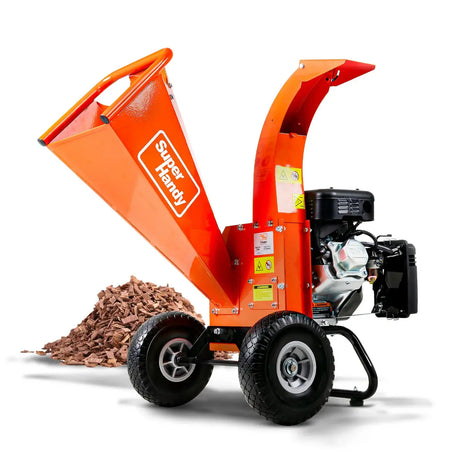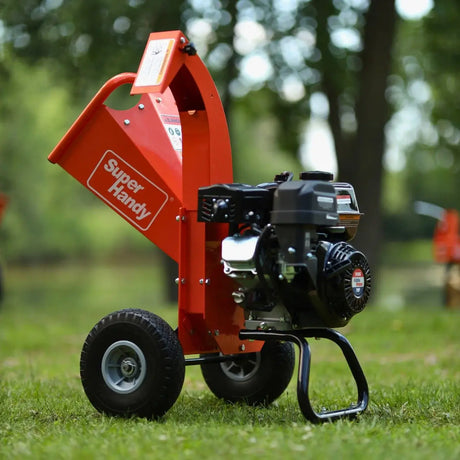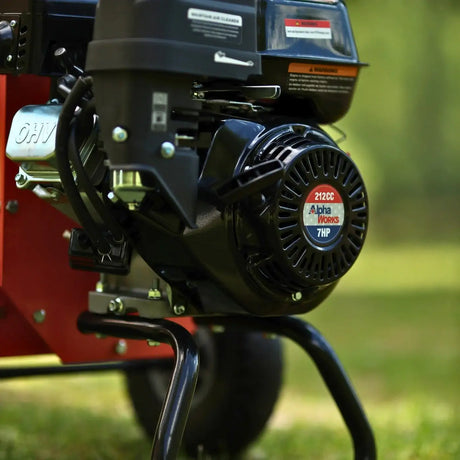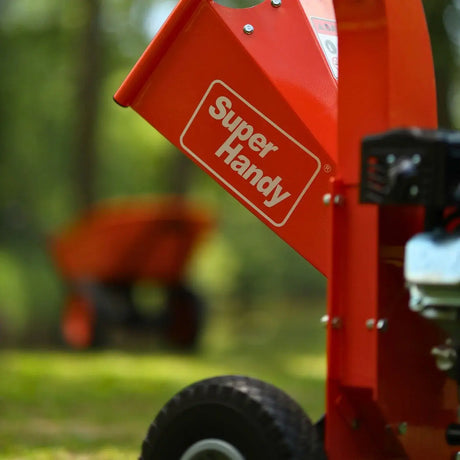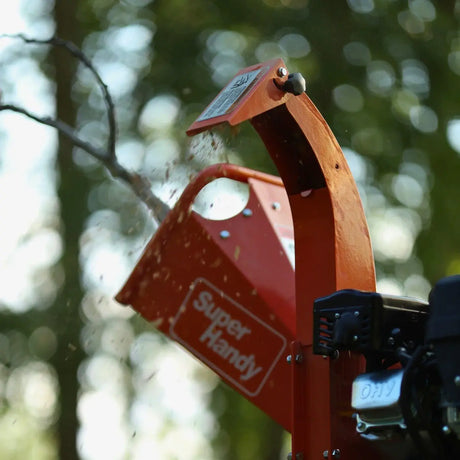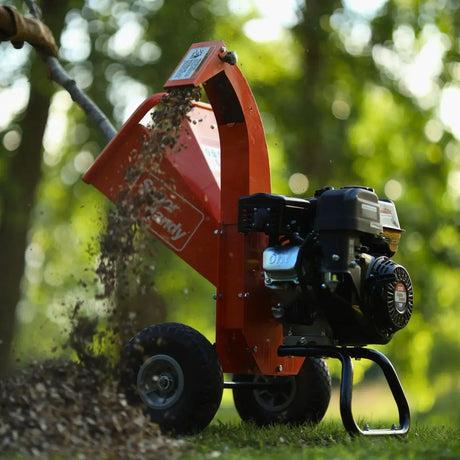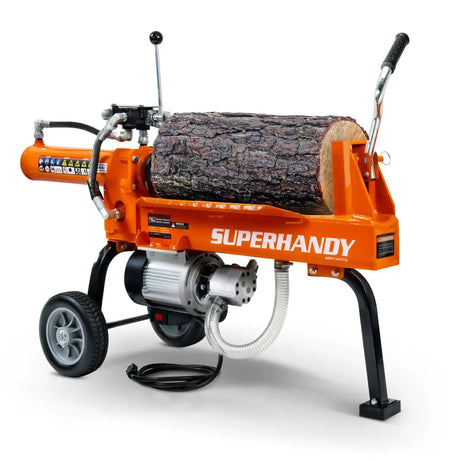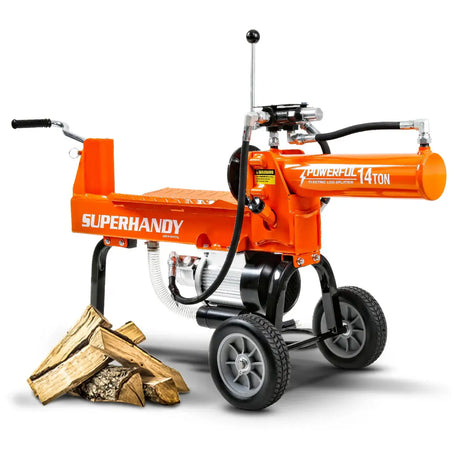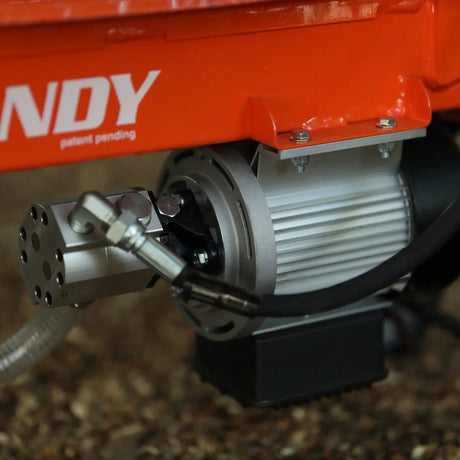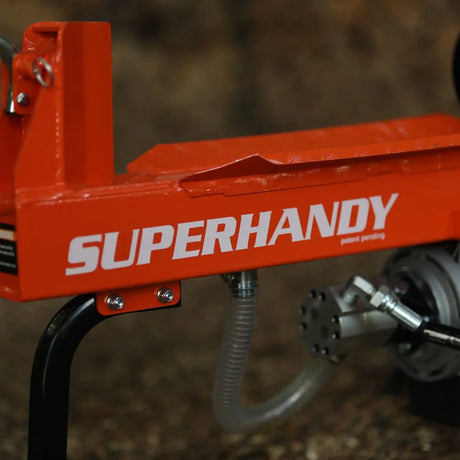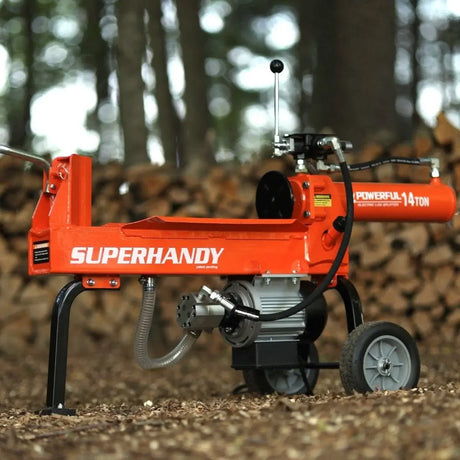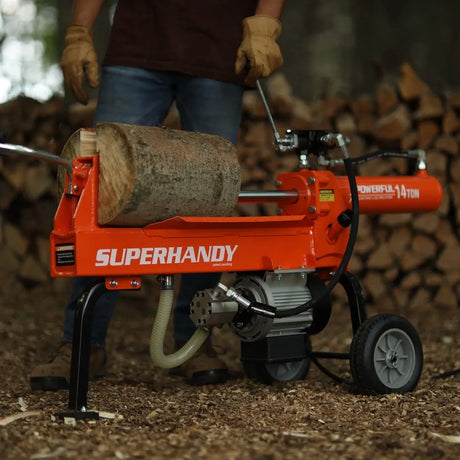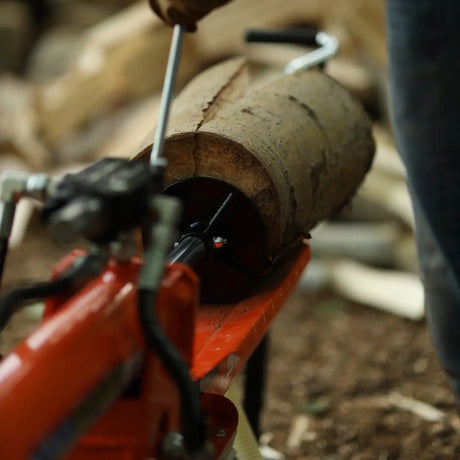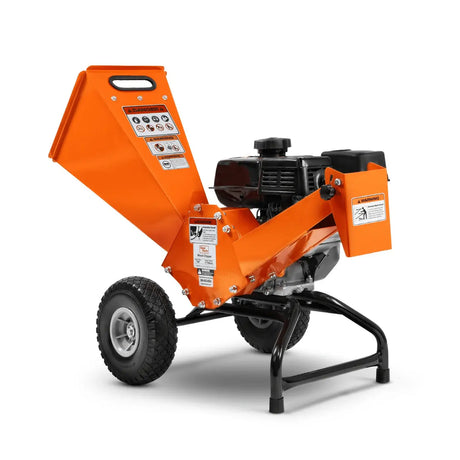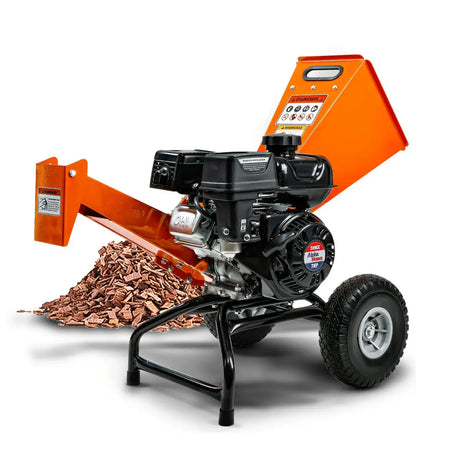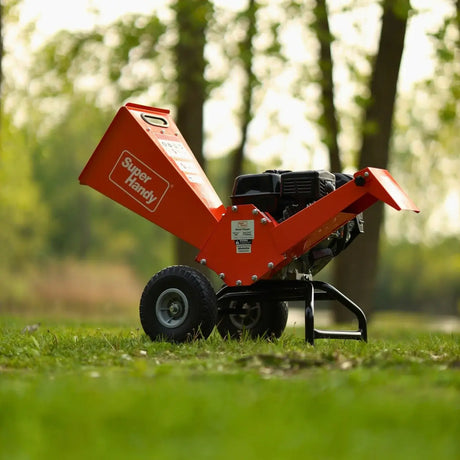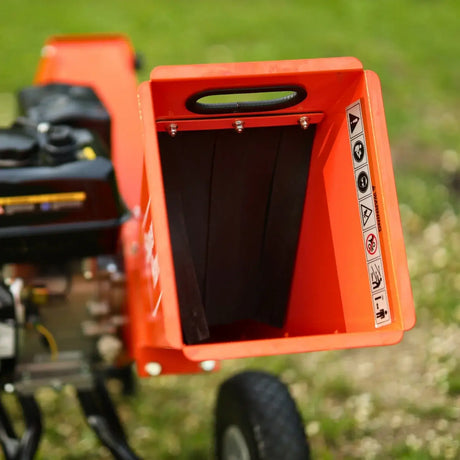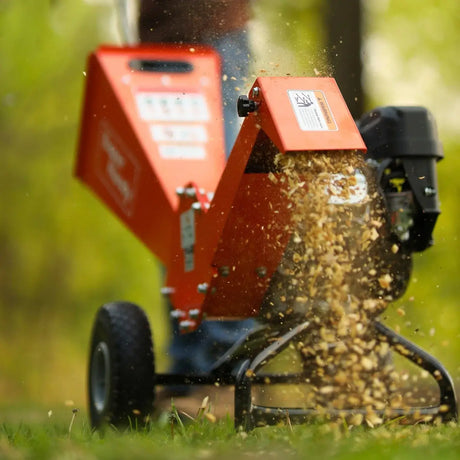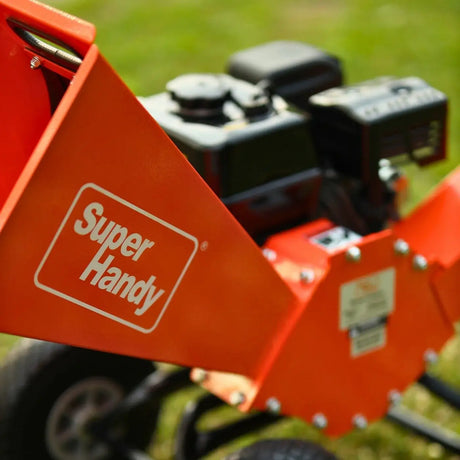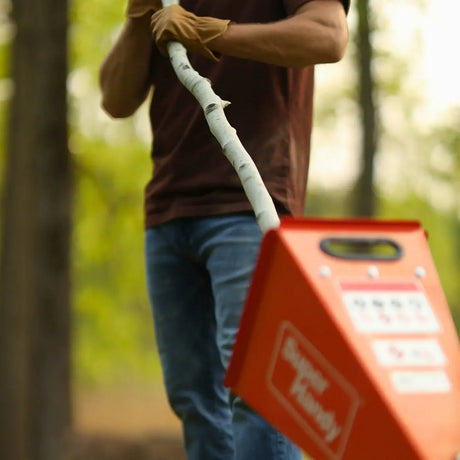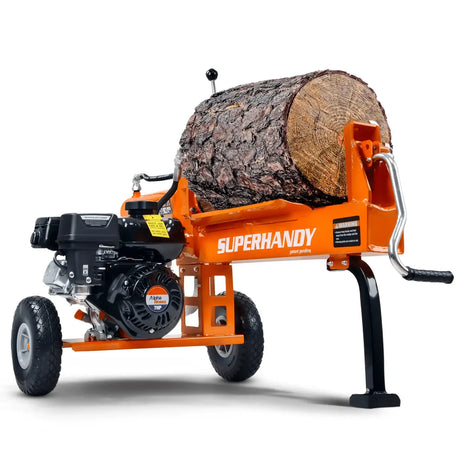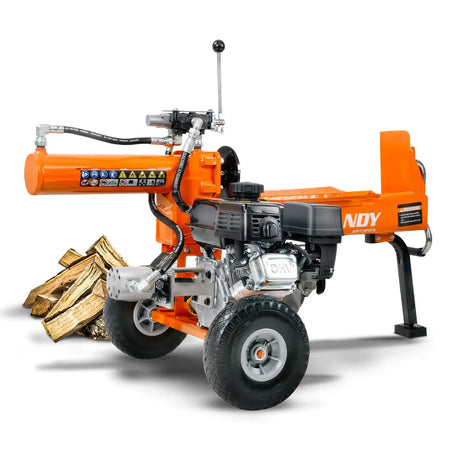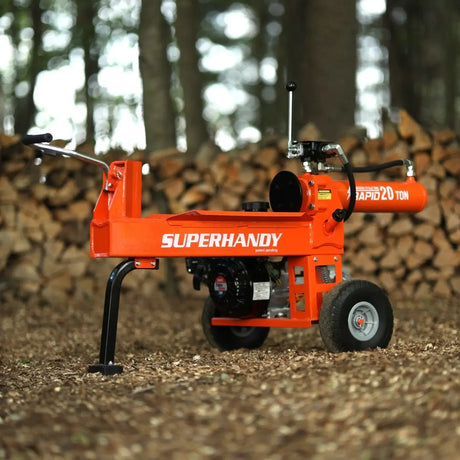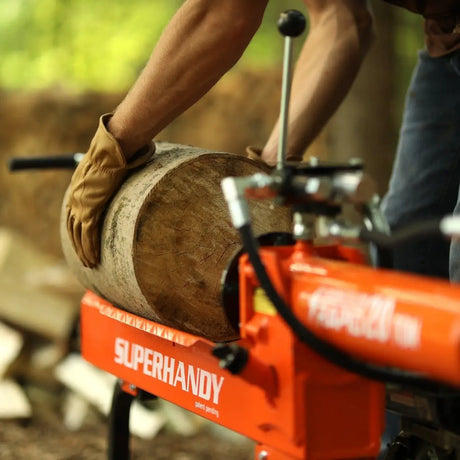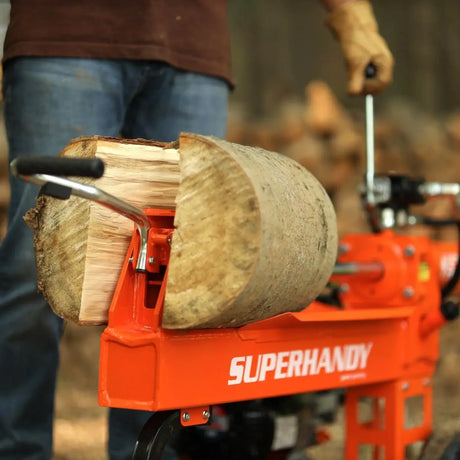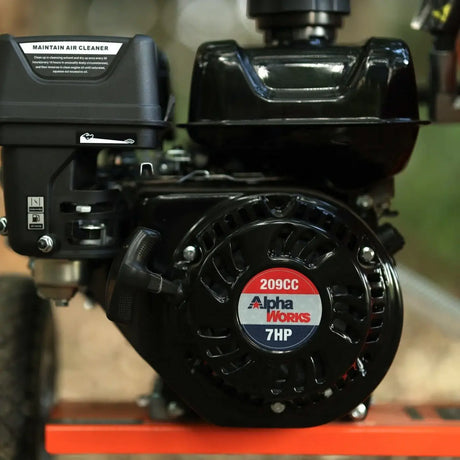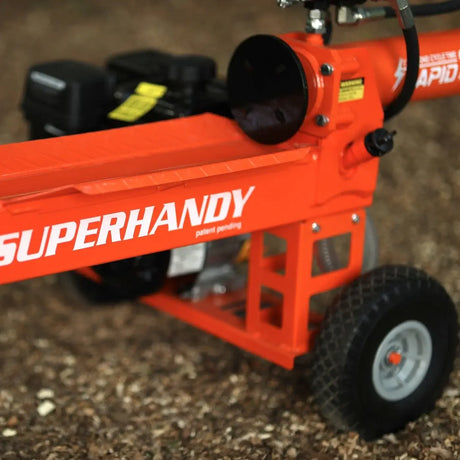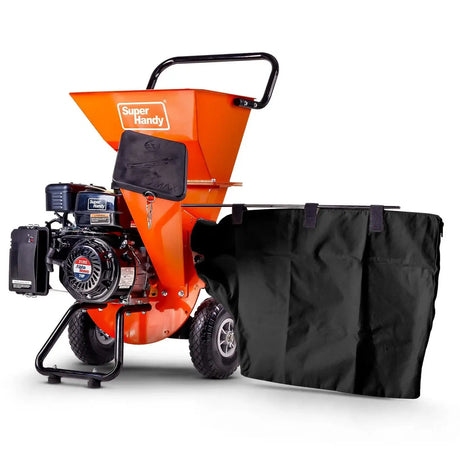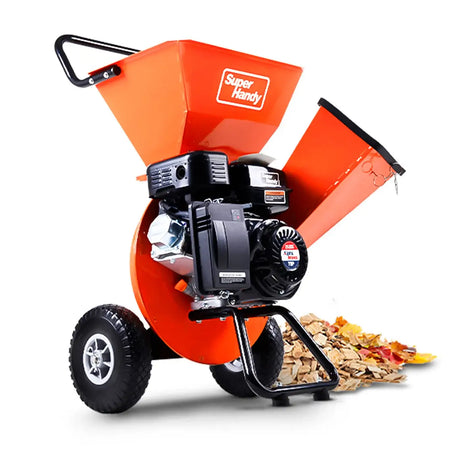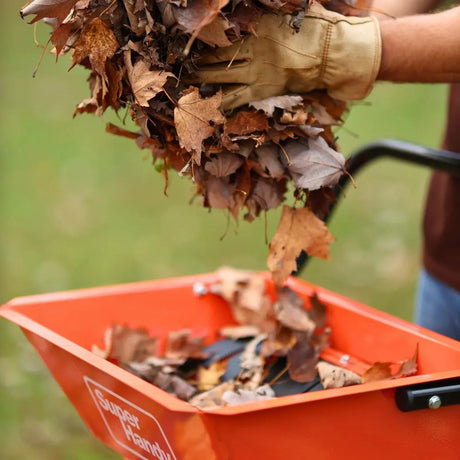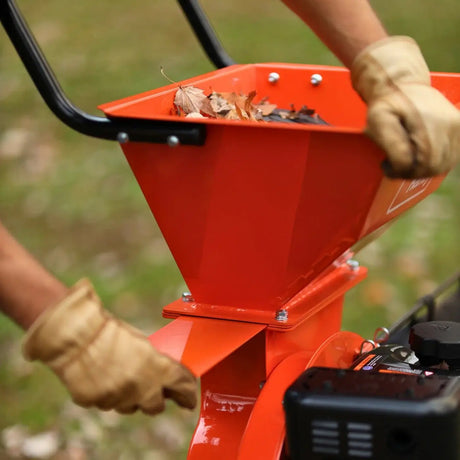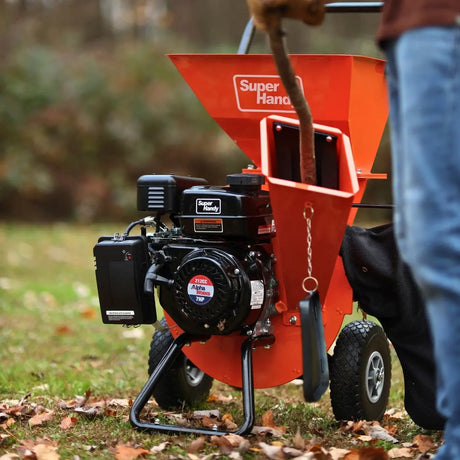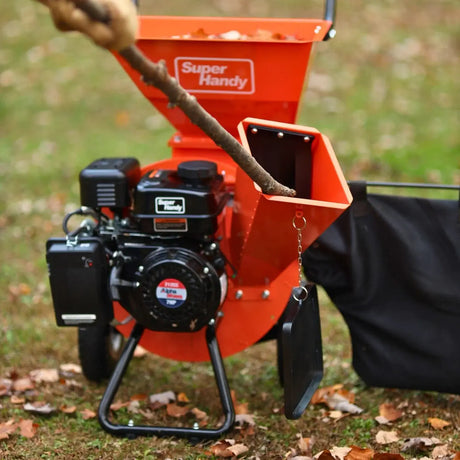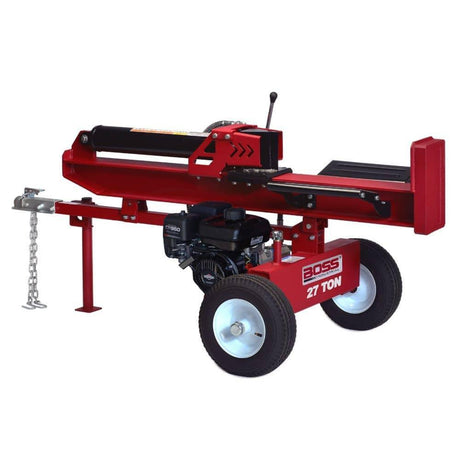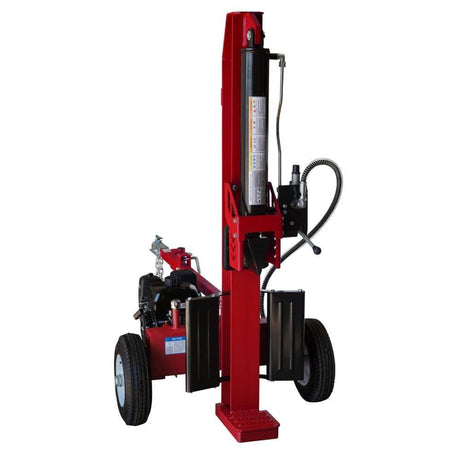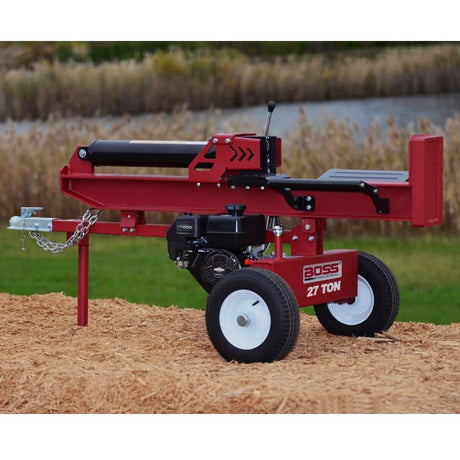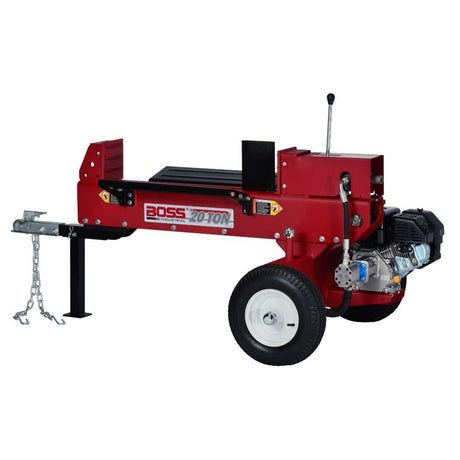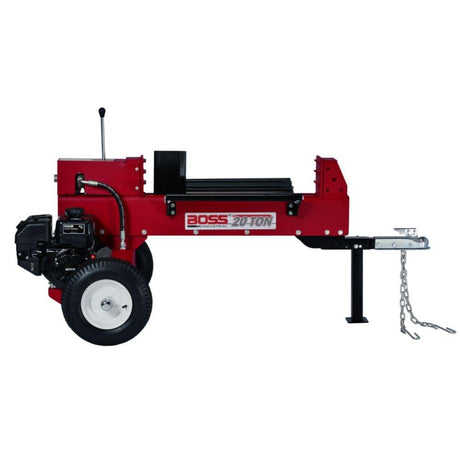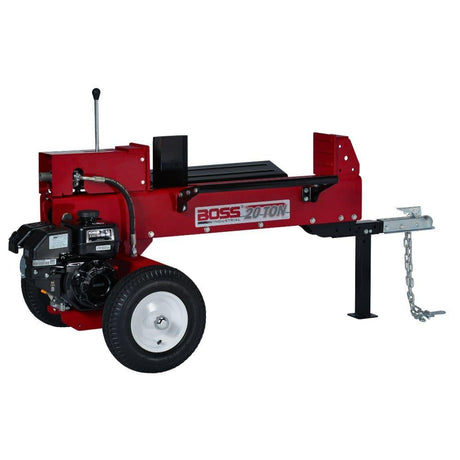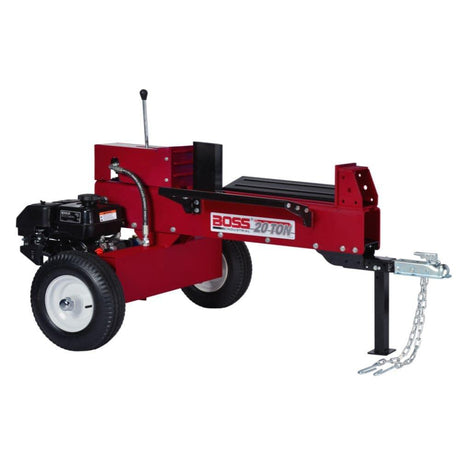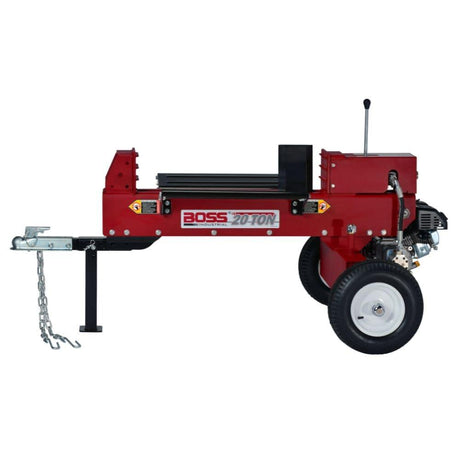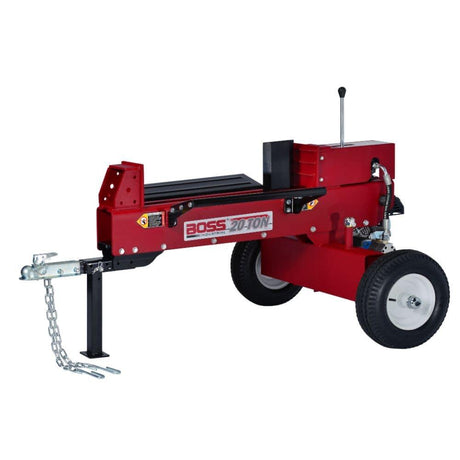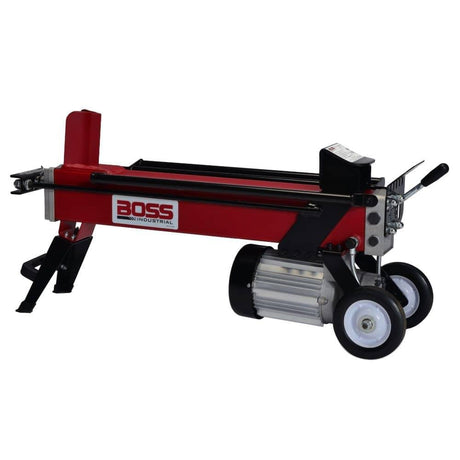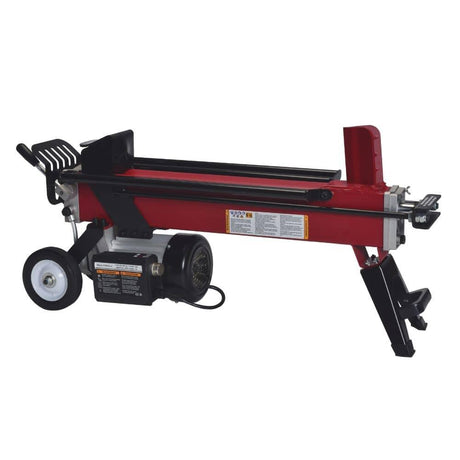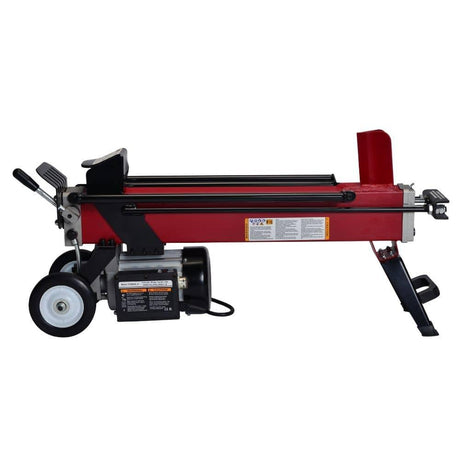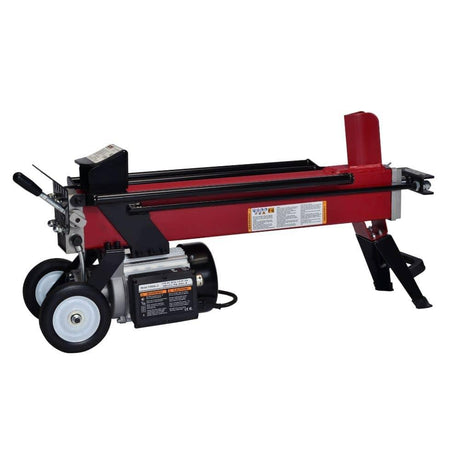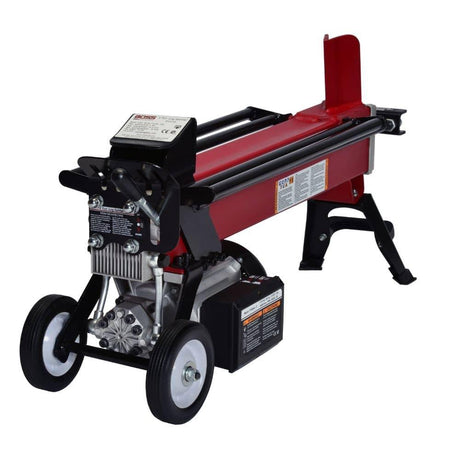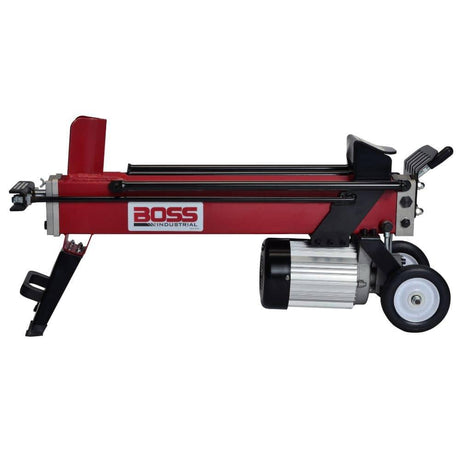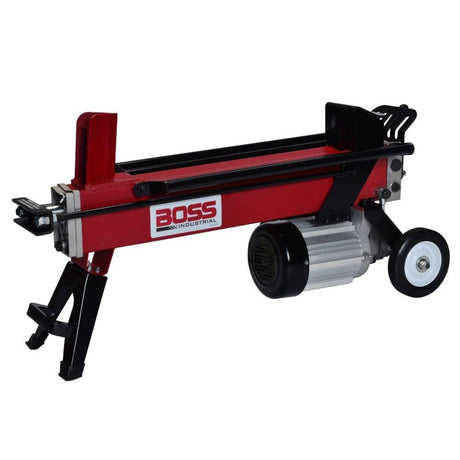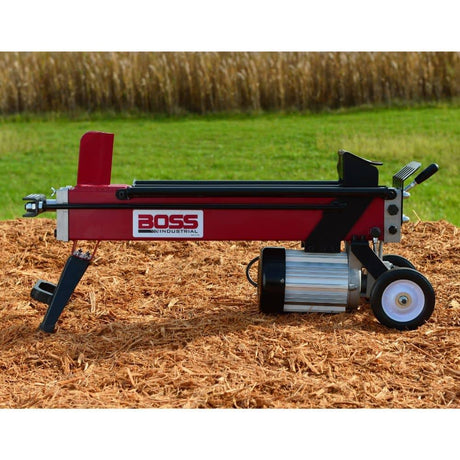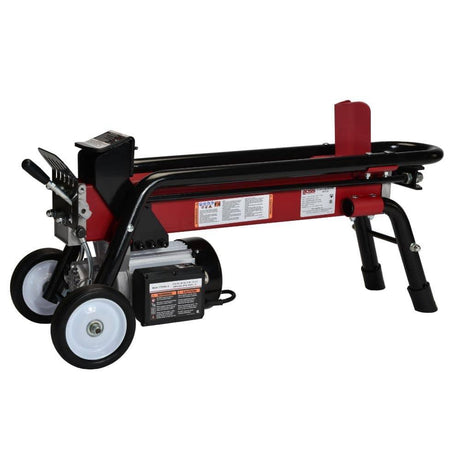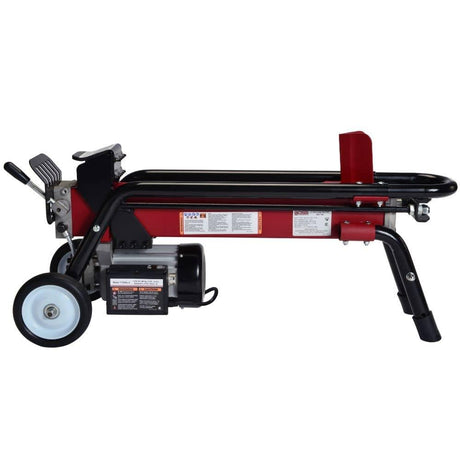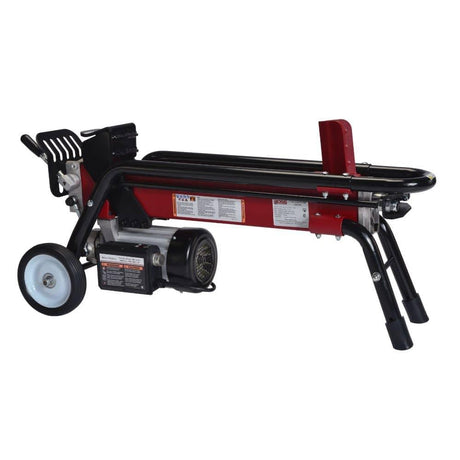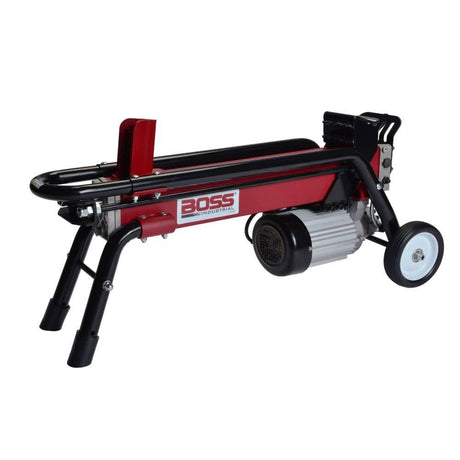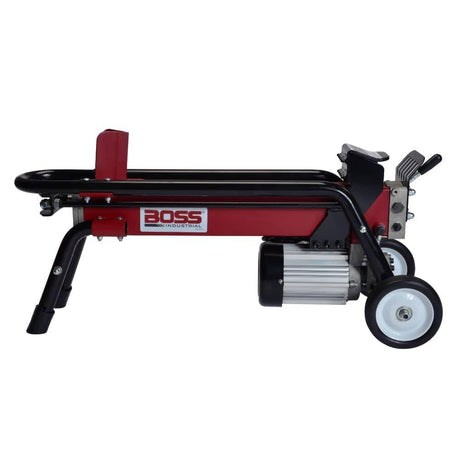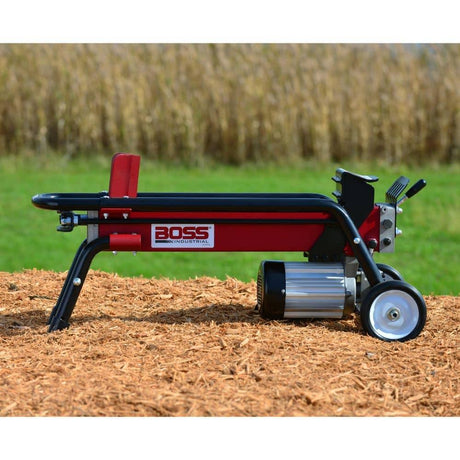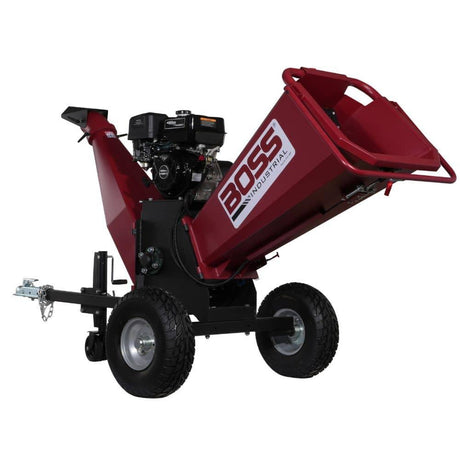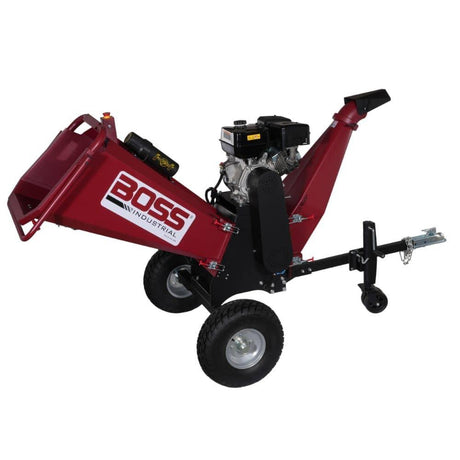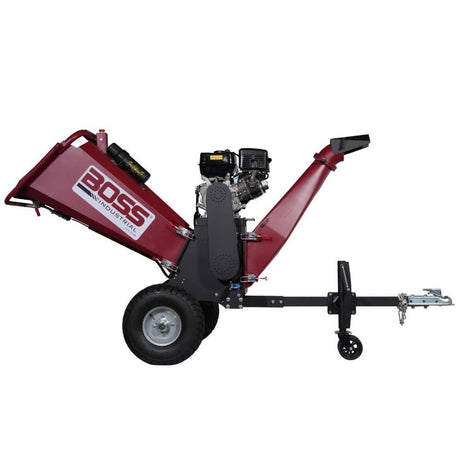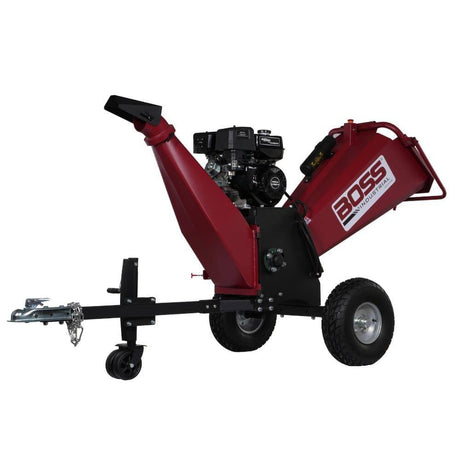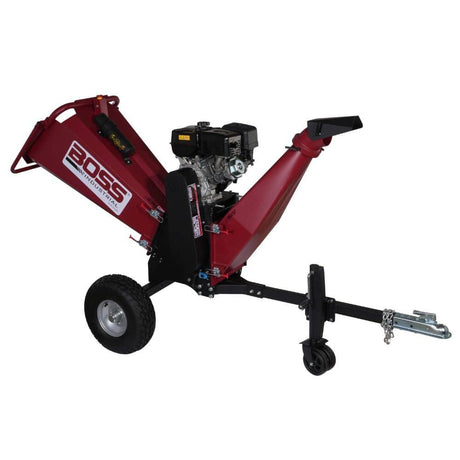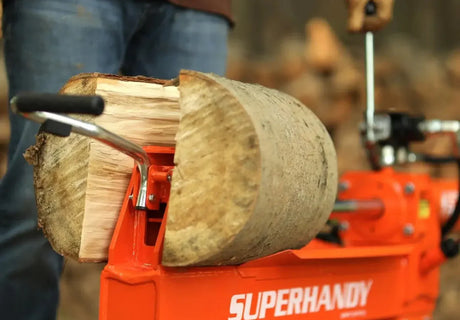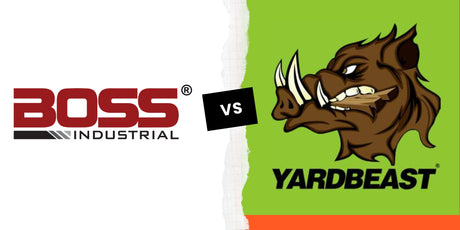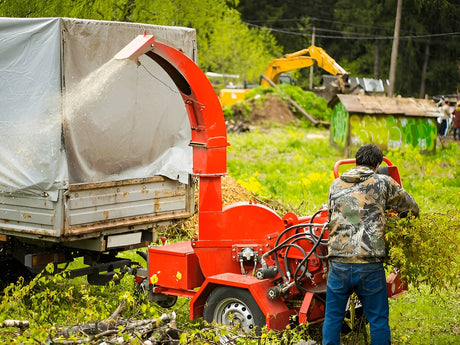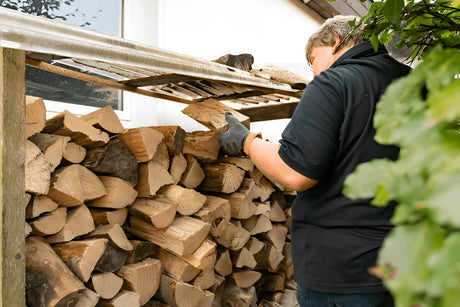Why More Homeowners Are Turning to Log Splitters in 2025
The Rise of Firewood Use for Heating and Outdoor Living
Over the last few years, firewood has made a big comeback-especially for folks heating their homes with wood-burning stoves, building weekend campfires, or prepping for power outages. With gas and electric prices continuing to rise, many homeowners are choosing to generate their own firewood from downed trees or logs on their property.
There's also a growing shift toward sustainable heating methods, and that's where a log splitter really shines. If you've got a supply of wood and you're tired of swinging a maul, the right log splitter can turn hours of work into minutes.
If you’re unsure what size machine you need, check out our What Size Log Splitter Do I Need? A Practical Guide for Buyers to find the right splitter for your needs.
Time and Energy Savings Compared to Manual Splitting
Ask anyone who's split logs by hand-it's a serious workout. A solid hour with an axe might yield 20-30 logs, depending on how tough the wood is. With electric log splitters, you're looking at 40-50 logs per hour. A gas powered log splitter? Try 60-80 per hour-no back pain required.
Here's how log splitters help you save time and energy:
- Shorter cycle times (as low as 10-12 seconds)
- No need to reposition logs after every split
- Handle larger pieces, tougher logs, and harder woods with ease
Whether you're stacking firewood for winter or clearing out logs after a storm, the efficiency is unmatched.
Curious how a splitter can simplify yard cleanup? Read Top 6 Yard Work Problems Solved by a Log Splitter to learn more.
Safer and Easier Than Using an Axe or Maul
There's no sugar-coating it-splitting logs with an axe can be dangerous. One wrong swing and you're risking injury. Most modern log splitters feature two handed operation and secure cradles that keep the log stable.
Safety benefits include:
- No need to swing sharp tools
- Controlled splitting force from a hydraulic piston or ram
- Less fatigue, better posture, and reduced risk of strain
Whether you're a retiree, weekend warrior, or new homeowner, using a splitter is simply safer-and easier-than swinging steel for hours.

Types of Log Splitters: Which One Fits Your Needs?
When choosing the right log splitter, your decision should start with how often you split, the type of wood you're working with, and your available power source. Here's what you need to know:
- Manual log splitters are simple, affordable, and good for very light or occasional use-but be honest with yourself. They're slower than any powered option and still require effort. Think 18-24 logs per hour if you're lucky.
- Electric log splitters are a step up. They're quiet, easy to maintain, and perfect for smaller logs or softer woods like pine or spruce. Most plug into a standard outlet and use electric motors to deliver up to 6-9 tons of splitting force. For most suburban homeowners splitting wood near the garage, an electric model is the sweet spot.
- Gas log splitters, powered by gas engines, are the go-to for handling larger logs, harder woods, and regular firewood production. These machines typically offer higher tonnage (20+ tons), faster cycle times, and can split almost anything you throw at them-ideal for harder logs like oak, hickory, or knotty elm.
- Within gas models, you'll also see vertical log splitters and horizontal splitters. Some machines are combo models, letting you switch between vertical for larger pieces and horizontal for standard use. If you're dealing with big, heavy logs you can't lift easily, vertical splitters can save your back.
For a curated list of powerful models, see our Top 10 Best Gas Log Splitters for 2025 for trusted recommendations.
Not sure where to start? Our complete log splitter guide breaks down every type—manual, electric, and gas—so you can confidently choose what fits your workflow.
Expert tip: If you live in a cold climate or own acreage, go for a gas powered model with hydraulic power and at least 25 tons of splitting force. You'll thank yourself during the second cord.
Key Features to Look For in 2025
Log splitters aren't one-size-fits-all. Understanding a few key features can help you avoid buying a model that doesn't match your real-world needs:
- Tonnage: This is your machine's splitting force. More force equals more wood types you can handle. 6-10 tons = smaller logs and electric models. 20+ tons = serious firewood production.
- Cycle time: This is how long it takes to complete a full split. Faster isn't always better, but anything under 15 seconds is good. Shorter cycle times help when splitting a large pile.
- Log length capacity: Most machines handle 20-25" logs. Make sure the splitter's capacity matches your firewood needs. Some cutoffs are strict.
- Towability: Many gas powered splitters are equipped with highway-grade tires for towing. If you'll be hauling to a second property or different location, this matters.
- Hydraulic systems: A solid hydraulic log splitter will feature a reliable splitting wedge, clean hydraulic systems, and sturdy seals to avoid leaks. Check for easy-access oil refill ports and steel hoses.
- Durable construction: Look for welded steel frames, powder coating, and protected hydraulic components. It's the difference between replacing your splitter in 5 years-or keeping it for 15.
Wondering how many tons of splitting force you actually need? Use our splitting tonnage chart to match your machine to your log size and wood type.
Storage tip: If you live in a wet climate, a good cover and regular oil checks will help extend the life of your machine.
Best Brands to Watch: SuperHandy, Boss Industrial, YardBeast
If you're searching for the best log splitter in 2025, these three brands continue to stand out.
- SuperHandy offers reliable electric log splitters that are ideal for occasional use, small yards, or folks who don't want to deal with gas. Their compact, plug-and-play models handle smaller logs with ease and are great for quick weekend jobs near a power source.
- Boss Industrial makes some of the most trusted gas powered log splitters on the market. Known for their one-handed operation, strong splitting capacity, and faster cycle times, they're a top pick for landowners, frequent users, and anyone wanting a balance of power and simplicity.
- YardBeast is where you go when you're done playing around. These machines are built like tanks. If you're tackling larger logs, tougher logs, or just want the best log splitter money can buy, YardBeast delivers. Their hydraulic models offer serious splitting force, durable construction, and are ideal for commercial or heavy seasonal use.
Pro tip: Always check the model specs-cycle time, splitting force, and tonnage-against your actual job. Don't buy more power than you'll use, but don't underestimate harder logs either.

How Much Time and Effort Can You Actually Save?
Realistic Log Splitting Speeds by Splitter Type
Let's talk numbers-because this is where log splitters earn their keep. If you've ever spent a Saturday splitting logs with an axe or maul, you already know the physical toll it takes. You're looking at 20-30 logs per hour if you're consistent and strong. That's about one cord of firewood every 2-3 days-assuming no back strain or blisters.
Now enter modern log splitters.
- Electric log splitters can process 40-50 logs per hour, with minimal effort. Plug them in, press the controls, and let the splitting wedge and electric motor do the work. They're excellent for smaller logs, softer woods, or backyard users who just want to get the job done without a sweat.
- Gas powered log splitters take things to another level. Depending on the model, you're looking at 60-80 logs per hour-and more splitting force means they'll also breeze through larger logs, tougher logs, and even the occasional stubborn log without hesitation.
- Hydraulic log splitters are the most common type of both electric and gas models. These use a hydraulic system to drive a splitting wedge through the log. When maintained properly, they offer long-term power, reliability, and consistent results. Cycle time matters here-faster cycle times (around 11-15 seconds) = more wood split per hour.
So what does that really mean? If you're splitting firewood regularly, an efficient gas powered splitter can literally save you hours per week during peak season. Multiply that over a year, and you're looking at days of free time back in your pocket.
Time = Money: Where Log Splitters Pay Off
Here's the deal: if you rely on firewood and you're not using a log splitter, you're likely spending money in one of two ways-either paying for pre-split wood, or renting a machine every season.
Let's break this down:
- Renting a decent gas powered splitter usually costs around $80-$120/day. Do that a few times a year, and you're pushing $400+ annually. Over just three seasons, you've already paid the cost of owning the best log splitter outright.
- Now let's say you're buying split firewood. Prices vary, but it's common to pay $250+ per cord. With your own splitter, you can split your own logs for free or at a fraction of the cost (just gas, maintenance, and time).
- Add in the value of your time and the physical toll you avoid? That's where the investment really shines. You're not just buying a machine-you're buying back your weekends and reducing your dependence on seasonal price hikes or limited supply.
Tip: For the best return, match your splitter's capacity to your annual wood use. A 22-ton gas powered model with a solid hydraulic system can easily handle 5-10 cords/year, especially if it has a short cycle time.
Added Benefits Beyond Speed
Sure, log splitters are about saving time. But what often gets overlooked is how much they improve every part of the process. When you're splitting logs manually, it's messy, inconsistent, and sometimes dangerous. A powerful log splitter turns that chaos into clean, predictable progress.
- Consistency matters: Uniform splits mean easier stacking, better airflow, and more efficient burning. You're not just cutting wood-you're optimizing your firewood supply.
- Less physical wear and tear: If you're 40+, have a bad back, or just don't want to swing an axe in 20°F weather, a log splitter is peace of mind. Especially with two handed operation systems that protect your limbs and require minimal muscle to operate.
- Emergency readiness: During storms or power outages, having dry, split wood on hand isn't a luxury-it's survival. Owning your own splitter lets you prep on your schedule, not someone else's.
- Family involvement: Believe it or not, kids or older family members can safely assist with electric models (under supervision). It turns splitting wood into a chore you can share.
Bottom line? You're not just getting more logs split-you're making the whole experience safer, faster, and more enjoyable.
When It Makes Sense to Rent Instead
Situations Where Owning Isn't Necessary
While owning a log splitter is a game-changer for many, it's not always the right move for every homeowner. There are plenty of cases where renting can make more sense-especially if your firewood needs are light or infrequent.
If you live in a small urban home and only burn firewood for ambiance once or twice a year, owning a splitter might be overkill. You're not dealing with larger logs, harder woods, or high volume-so the investment might sit idle most of the year.
Another scenario: you already have access to affordable or free pre-split wood from neighbors, a local farm, or community bulk sales. In that case, the hassle of sourcing raw logs and then splitting them yourself may not be worth the effort or cost of even the best log splitter.
Post-storm cleanups are another common reason homeowners consider buying-but think about how often those storms happen. If it's a once-every-few-years kind of job, renting a gas powered log splitter for a weekend might be smarter than owning. Especially if you don't want to worry about storing or maintaining a large machine you only use once in a while.
And let's not forget space. If your garage or shed is already packed, and you're not using a compact electric model, you might not have a good spot to keep a splitter safe, dry, and out of the way.
How to Decide Between Renting and Buying
So how do you know which path to take? Start with one question: How much wood do you really process each year?
Let's say you go through 2 cords of firewood per winter. Renting a splitter once or twice for $100-$150 might be cheaper than owning-especially when you factor in fuel, maintenance, and time.
But if you're splitting more than 4 cords a year, or doing it across multiple seasons, you're probably throwing money away by renting. That's when the math flips-and owning becomes not just convenient but cost-effective.
Here's a simple rule of thumb:
If you're spending more than $300/year on rental fees or pre-split wood-and you've got the space to store it-buying a quality electric or gas log splitter will likely save you money in year two.
Another consideration is availability. After a big storm, splitters can be hard to rent locally. Everyone rushes to the same rental yard. Owning your own splitter means you're not depending on the seller's schedule or standing in line when you need it most.
Also, look at the job you need done. If it's a one-off project with smaller logs, renting an electric splitter for a day or two gets the job done with minimal hassle. But if you're regularly dealing with tougher logs, larger pieces, or want more control over your splitting capacity, you'll benefit more from having a reliable machine ready whenever you need it.
And don't forget: tools wear down. Rental units aren't always in great shape. A gas powered splitter with dull blades, slow cycle time, or poorly maintained hydraulic system can be frustrating and inefficient. If you purchase a splitter, at least you know what condition it's in-because you're the one maintaining it.
In short, renting works for:
- Light, one-time use.
- Occasional splitting in tight urban spaces.
- Homeowners with easy access to split firewood.
Owning is the better call if:
- You split more than 3-4 cords per year.
- You need flexibility and immediate access.
- You care about efficiency, safety, and long-term savings.

Summary: Are Log Splitters Worth It for Homeowners in 2025?
The Verdict Based on Use Case
If you're someone who regularly burns wood-for heating, cooking, outdoor fires, or just because you enjoy the self-sufficient lifestyle-a log splitter isn't just helpful. It's essential. In 2025, more and more homeowners are waking up to how much time and physical energy they can save with the right log splitter.
For frequent firewood users, the answer is a clear yes. Whether you're splitting a cord or ten, doing it by hand gets old fast. Gas log splitters and hydraulic log splitters offer the splitting force needed to move through large stacks, even with tougher logs like hickory or elm. You're not swinging an axe. You're pressing a lever and letting hydraulic power do the job with consistent, controlled cuts.
If you live on rural land and deal with larger logs, knotty hardwoods, or storm damage, owning a gas powered model with 20+ tons of splitting force makes your firewood workflow far more efficient. You're not only saving hours-you're generating higher-quality fuel, sized right for your stove or pit, with less wear on your body.
On the other hand, if you burn wood occasionally-maybe just for a weekend fire pit or a cozy indoor night-electric log splitters are a solid option. These compact, low-maintenance machines don't require gas, rarely need blade sharpening, and work quietly in your driveway or garage. No fumes. No recoil. Just clean, smooth splitting. They're also easy to store, which is a big deal for smaller homes or tight sheds.
Final Thoughts: Choosing the Right Splitter for You
Start by being honest about your usage. Ask yourself:
- How much wood do I split each year?
- What types of wood am I dealing with-soft, seasoned, or green hardwoods?
- How much physical effort am I willing to put in-and how much time do I want to save?
If you're working mostly with smaller logs and softer woods, or doing 1-2 cords per year, an electric model from a trusted brand like SuperHandy will handle the job just fine. It's affordable, convenient, and doesn't require a ton of upkeep.
If you're moving serious volume, or handling harder logs, stubborn logs, or larger pieces, a gas powered log splitter is the smart move. Brands like Boss Industrial and YardBeast offer powerful log splitters with advanced hydraulic systems, faster cycle times, and heavy-duty splitting wedges-perfect for anyone who doesn't want to fight their wood every weekend.
And don't forget portability. Some vertical log splitters can flip to horizontal splitters and back, giving you ergonomic options based on the log's size. This flexibility matters more than you think after an hour or two of work.
At the end of the day, owning the best log splitter for your needs is about more than just performance. It's about control. It's about making firewood prep a satisfying task instead of a dreaded chore. In 2025, with so many models, gas engines, and electric motors on the market-choosing well means you save time, generate better results, and get back to doing the things you actually enjoy.
For the serious homeowner, a splitter isn't a luxury. It's a tool that pays for itself. And in most cases? It's absolutely worth it.


